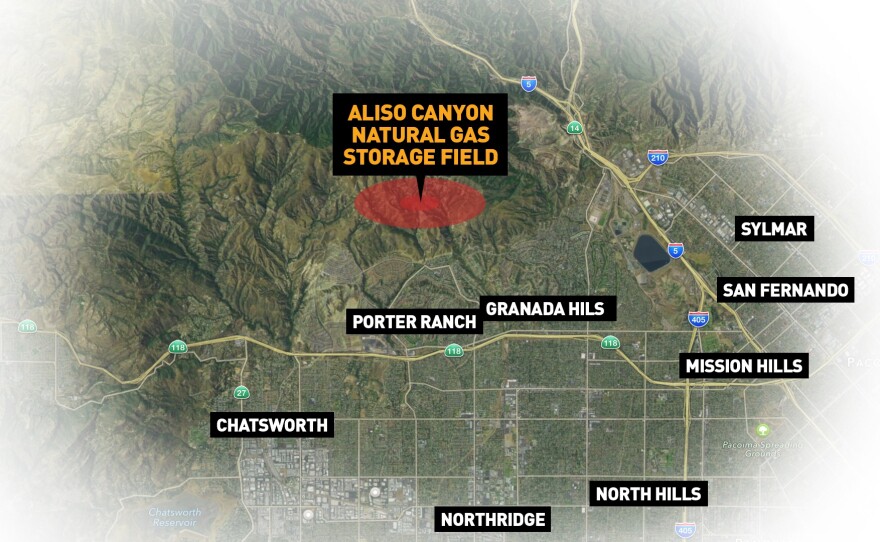A California natural gas storage facility where a blowout spewed methane for nearly four months has completed a safety review required to resume operations, though it might never return to full capacity, state officials said Tuesday.
The Southern California Gas Co. facility at Aliso Canyon has been crippled more than a year since the blowout discovered in October 2015 drove 8,000 families from their Los Angeles homes and led to mass complaints of nosebleeds, nausea, headaches and other maladies.
RELATED: There’s Still No Explanation For The Aliso Canyon Methane Leak
Fewer than a third of the 113 wells at the aging former oil field have passed rigorous inspections ordered after the blowout. The remaining ones have been taken out of service and must pass state-mandated tests within a year or be permanently sealed.

The state could sign off as soon as next month to allow use of the approved wells to store more gas, though the company would be restricted to about a third of the facility's storage capacity, the Department of Conservation said.
While the facility has a capacity of 83 billion cubic feet, the state has set a storage limit of 29 billion cubic feet — about double the amount of natural gas that remains in caverns more than a mile underground. The state said the maximum safe capacity is 65 billion cubic feet, far below the full capacity.
"At this point in time, there's no information that would indicate that returning to that whole capacity of the 83 billion cubic feet would ever be needed," said Edward Randolph of the California Public Utilities Commission.
SoCalGas did not respond specifically to questions about the reduced capacity, saying in a statement that it was reviewing the additional guidelines.
Aliso Canyon is the largest natural gas storage site in the West and is considered critical to the Los Angeles area for home heating and to power gas-fired electricity plants during energy spikes.
However, blackouts predicted without the facility in full operation have not occurred, and many nearby residents want it permanently shut down after enduring the stench, ailments and frustration after the blowout.
They can now have their say in public comments accepted until Feb. 6 and at hearings Feb. 1 and 2 in Woodland Hills.
State officials will decide whether to allow SoCalGas to resume storage operations after the public comment period.
The cause of the blowout remains under investigation.






